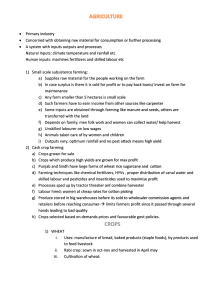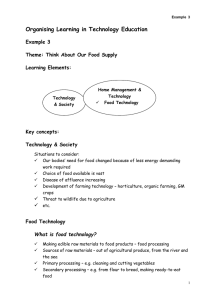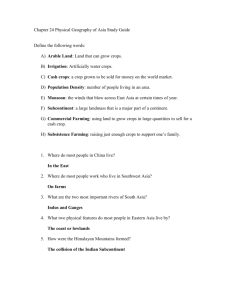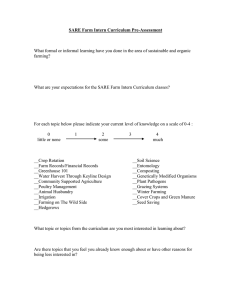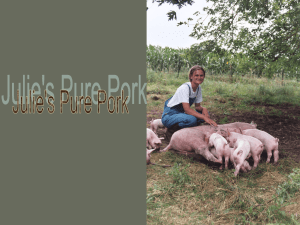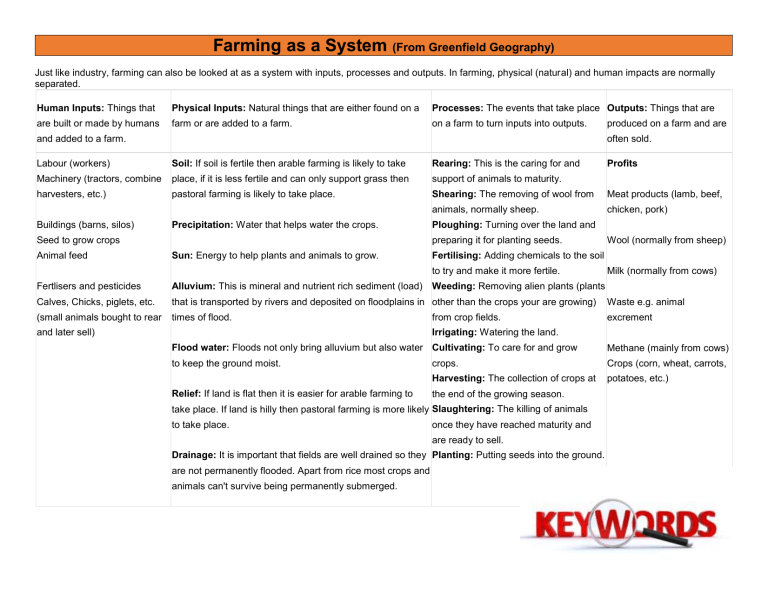
Farming as a System (From Greenfield Geography) Just like industry, farming can also be looked at as a system with inputs, processes and outputs. In farming, physical (natural) and human impacts are normally separated. Human Inputs: Things that Physical Inputs: Natural things that are either found on a Processes: The events that take place Outputs: Things that are are built or made by humans farm or are added to a farm. on a farm to turn inputs into outputs. produced on a farm and are and added to a farm. often sold. Soil: If soil is fertile then arable farming is likely to take Rearing: This is the caring for and Machinery (tractors, combine place, if it is less fertile and can only support grass then support of animals to maturity. harvesters, etc.) pastoral farming is likely to take place. Labour (workers) Buildings (barns, silos) Seed to grow crops Animal feed Precipitation: Water that helps water the crops. Shearing: The removing of wool from Meat products (lamb, beef, animals, normally sheep. chicken, pork) Ploughing: Turning over the land and preparing it for planting seeds. Sun: Energy to help plants and animals to grow. Profits Wool (normally from sheep) Fertilising: Adding chemicals to the soil to try and make it more fertile. Milk (normally from cows) Alluvium: This is mineral and nutrient rich sediment (load) Weeding: Removing alien plants (plants Fertlisers and pesticides Calves, Chicks, piglets, etc. that is transported by rivers and deposited on floodplains in other than the crops your are growing) Waste e.g. animal (small animals bought to rear times of flood. excrement and later sell) Irrigating: Watering the land. Flood water: Floods not only bring alluvium but also water Cultivating: To care for and grow Methane (mainly from cows) to keep the ground moist. Crops (corn, wheat, carrots, crops. from crop fields. Relief: If land is flat then it is easier for arable farming to Harvesting: The collection of crops at the end of the growing season. Slaughtering: The killing of animals take place. If land is hilly then pastoral farming is more likely to take place. once they have reached maturity and are ready to sell. Planting: Putting seeds into the ground. Drainage: It is important that fields are well drained so they are not permanently flooded. Apart from rice most crops and animals can't survive being permanently submerged. potatoes, etc.)
